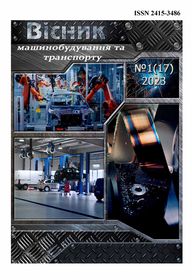The use of augmented reality technology in the training of specialists in the operation and repair of multi-purpose armored military vehicles
DOI:
https://doi.org/10.31649/2413-4503-2023-17-1-153-162Keywords:
AR - augmented reality, VR - virtual reality, Higher education, Automotive equipment, Motor vehiclesAbstract
One of the promising trends in modern training is the maximum immersion of students in educational material in order to ensure the immersiveness of education. To increase the efficiency of the educational process, new information technologies are being actively introduced. Such technology is augmented reality (AR). Augmented reality allows you to implement this approach using smartphones, tablets and computers. Currently, two approaches are used: marker and marker-free technology. The use of augmented reality is possible both online and offline. Materials for the implementation of this technology in the educational process are usually prepared by IT companies using languages and programming tools of their own development, which somewhat reduces the availability of technology for ordinary users (both teachers and students). The purpose of this study is to analyze the reasons that limit the spread of augmented reality technology in the educational process and to offer own solution to this issue. On the example of using the Aurasma platform, an option of introducing augmented reality technology into process of training of operators of multi-purpose armored military vehicles is proposed. The proposed option of using public software and devices for the development and application of the information system allows students to study the device, the principle of its operation, features of diagnostics and maintenance of systems, units and components of the military vehicle. The proposed technology of augmented reality allows to increase the level of remote learning of information material by 8.2%, as well as to ensure the formation of highly qualified bachelors, masters or doctors of philosophy upon implementation of remote learning technologies in higher education. With the development of information transmission technology 5G and above, the need for such information systems will grow. The decrease in the cost of smartphones, tablets and other devices, such as augmented reality glasses, will also give an additional impetus to the development of this technology.
References
Dewey J. Democracy and education: an introduction to the philosophy of education, New York: Macmillan; 1916.
Caudell TP, Mizell DW. Augmented reality: an application of heads-up display technology to manual manufacturing processes. In Twenty-Fifth Hawaii International Conference on. Presence: Teleoperators and Virtual Environments. 2. IEEE, pp. 659-669; 1992.
Azuma RT. A survey of augmented reality, Teleoperators and Virtual Environments, 1997; 6(4): 355-385.
Augmented Reality and Virtual Reality Market Size - Global Industry, Share, Analysis, Trends and Forecast 2022 - 2030. Retrieved from: https://www.acumenresearchandconsulting.com/augmented-reality-and-virtual-reality-market; 15 April, 2023.
CCS Insight / Blog / Extended Reality Deserves Optimism. Retrieved from: https://www.ccsinsight.com/blog/extended-reality-deserves-optimism/; 15 April, 2023.
Akçayır M, Akçayır G. Advantages and challenges associated with augmented reality for education: a systematic review of the literature, Educational Research Review, 2017; 20: 1-11.
Geroimenko V. Augmented reality art: from an emerging technology to a novel creative medium. 2nd ed. Springer International Publishing; 2018.
Geroimenko V. Augmented reality games I: understanding the pokémon go phenomenon. Springer International Publishing; 2019.
Geroimenko V. Augmented reality games II: the gamification of education, medicine and art. Springer International Publishing; 2019.
Zhang X, Fronz S, Navab N. Visual marker detection and decoding in AR systems: a comparative study. In International Symposium on Mixed and Augmented Reality, рp. 97-107; 2002.
Mazanov VH, Romaniuk VА, Tyshkevych YuYu. Use augmented reality technology for training and diagnostics automotive technicians, The collection of scientific works of the National Academy of the National Guard of Ukraine, 2014; 1(23): 33-37.
Reimpell J, Betzler JW. The automotive chassis: engineering principles. Oxford: Butterworth-Heinemann; 2001.
Sklyarov М., Shapovalov O. Mathematical simulation of movement on a deformed supporting surface with change of tire pressure in wheel tires of a multi-purpose armored vehicle in the example of KrAZ “Hurricane”, The collection of scientific works of the National Academy of the National Guard of Ukraine, 2021; 1(37): 78-88, https://doi.org/10.33405/2409-7470/2021/1/37/237881.
Sklyarov M., Nikorchuk A., Shapovalov O. Study of patency of trucks of the National Guard of Ukraine with wheel formula 6 × 6, The collection of scientific works of the National Academy of the National Guard of Ukraine, 2022; 1(39): 55-62,
Automotive Handbook. 11th Ed. / [Reif K., Dietsche K.-H. & others]. Karlsruhe: Robert Bosch GmbH, 2022. 2048 p.
Kashkanov A., Kashkanova A., Podrigalo M., Klets D. et al., "Estimation Parameters of Braking of Vehicles Category M1 at Definition of Circumstances Road Accidents", SAE Technical Paper 2022-01-1166, 2022, https://doi.org/10.4271/2022-01-1166.
Kashkanov A, Rotshtein A, Kucheruk V, Kashkanov V. Tyre-road friction coefficient: estimation adaptive system, Bulletin of the Karaganda University. Physics series, 2020; 2(98): 50-59.
Bogomolov V, Klimenko V, Leontiev D, Ponikarovska S, Kashkanov A, Kucheruk V. Plotting the adhesion utilization curves for multi-axle vehicles, Bulletin of the Karaganda University. Physics series, 2021; 1(101): 35-45.
Downloads
-
PDF
Downloads: 222



